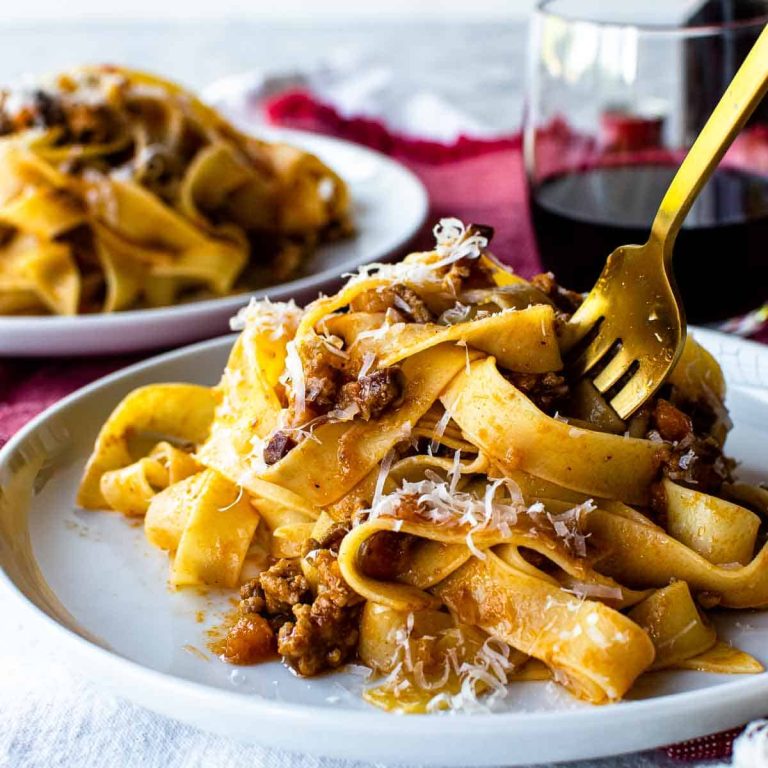Peperonata Recipe: Traditional Italian Dish with Perfect Pairings for Every Occasion
Peperonata hails from the southern regions of Italy, predominantly Calabria and Sicily. It embodies the spirit of Italian cuisine with its focus on fresh, local ingredients. Traditionally served during summer, Peperonata captures the season’s essence with its vibrant colors and flavors. Italians consider it comfort food, often evoking memories of family gatherings and rustic, home-cooked meals. Over time, Peperonata has transcended regional boundaries, becoming popular throughout Italy and among Italian communities worldwide. Its versatility and rich taste have cemented its place in the Italian culinary tradition.
Key Ingredients and Variations
Peperonata primarily contains bell peppers, tomatoes, onions, and olive oil. These ingredients form the dish’s rich base. Fresh bell peppers (red, yellow, and green) add sweetness and color. Tomatoes provide acidity and depth. Onions contribute a mild pungency, enhancing the overall flavor profile. Olive oil binds everything together, adding a smooth texture and richness.
You might encounter variations depending on the region or personal preference. Some recipes include garlic, capers, or olives for additional flavor. Others add herbs like basil or oregano. You can occasionally find versions incorporating eggplant or zucchini, giving the dish a unique twist. Despite these variations, the core components remain consistent, ensuring Peperonata retains its identity as a classic Italian dish.
Consider serving Peperonata hot or cold, as a side dish, a main course with bread, or even as a topping for bruschetta.
How to Make Peperonata
Choosing the Right Ingredients
Pick fresh bell peppers, tomatoes, onions, and olive oil to prepare authentic Peperonata. Opt for yellow, red, and green bell peppers for a vibrant dish. Choose ripe, garden-fresh tomatoes for their rich flavor. Select firm and slightly sweet onions, like yellow or red ones. Use high-quality extra virgin olive oil to enhance overall taste.
- Prepare Ingredients: Wash and core 4 bell peppers, then slice them into thin strips. Dice four medium-sized tomatoes. Peel and thinly slice two large onions. Mince two cloves of garlic, if using.
- Sauté Onions: Heat 3 tablespoons of olive oil in a large skillet over medium heat. Add the sliced onions and cook until they become translucent, around 7 minutes.
- Add Garlic: If using garlic, add it to the onions and sauté for an additional 2 minutes, ensuring the garlic doesn’t burn.
- Cook Bell Peppers: Add the sliced bell peppers to the skillet. Stir frequently and cook until they start to soften, about 10 minutes.
- Combine Tomatoes: Add the diced tomatoes to the skillet. Stir well, reduce the heat to low, and let the mixture simmer. Cook for 20 to 25 minutes until the peppers are tender and the tomatoes have created a thick sauce.
- Season: Season with salt and black pepper to taste. If desired, add a handful of chopped basil or oregano towards the end of cooking for extra flavor.
- Rest: Remove from heat and let the Peperonata rest for at least 10 minutes before serving. This allows the flavors to meld together.
Serve Peperonata hot or cold. Pair it with crusty bread, use it as a bruschetta topping, or enjoy it as a side dish.
Serving Suggestions for Peperonata
As a Side Dish
Serve Peperonata alongside grilled meats or fish to enhance flavors. Pair it with steak, grilled chicken, or fish like salmon or sea bass. Its vibrant flavors complement proteins well. Offer it at barbecues as a colorful, healthy addition to the usual fare. Add it to antipasto platters with cured meats, cheeses, and olives to create a balanced, aesthetically pleasing spread. Serve it cold with a drizzle of extra virgin olive oil for a refreshing contrast to warm, richer dishes.
As a Main Course
Transform Peperonata into a hearty main course by serving it over polenta, rice, or pasta. Top a bowl of creamy polenta with a generous serving of Peperonata for a comforting meal. Mix it with cooked pasta and sprinkle with fresh basil and Parmesan for a quick, flavorful dinner. Add it over a bed of rice or quinoa for a wholesome, plant-based dish. Include crusty bread to absorb the rich juices, making every bite satisfying. Use it as a filling for stuffed peppers or omelets to create substantial, diverse meals suitable for any time of the day.
Pairings and Accompaniments
Wine Pairings
Choosing the right wine enhances the enjoyment of Peperonata. For a classic pairing, opt for Italian wines. Chianti, a well-known red wine from Tuscany, complements the rich flavors of the dish. If you prefer white wine, Vermentino offers a crisp note that pairs well with the sweetness of the peppers and tomatoes. For a sparkling option, Prosecco adds a refreshing touch, balancing the Peperonata’s savory elements. These options ensure that the Peperonata experience is both authentic and delightful.
Bread and Pasta Combinations
Peperonata shines when paired with various carb-based accompaniments. Freshly baked ciabatta, with its airy texture, is perfect for soaking up the flavorful juices. Baguette slices also work well, providing a crisp contrast to the tender vegetables. For pasta pairings, consider pappardelle or fettuccine. These wider noodles hold the chunky sauce effectively, making each bite flavorful. Oven-baked polenta also offers a hearty base, complementing the robust flavors of the Peperonata. These combinations showcase the dish’s versatility and enhance its culinary appeal.
Conclusion
Peperonata offers a delightful way to experience the rich flavors of Italian cuisine. Its fresh ingredients and simple preparation make it a versatile dish that can be enjoyed in various settings. Whether you’re pairing it with a robust Chianti, a crisp Vermentino, or serving it alongside ciabatta or pappardelle, Peperonata promises to elevate your meal. Embrace this traditional dish and experiment with different accompaniments to discover your perfect combination.






